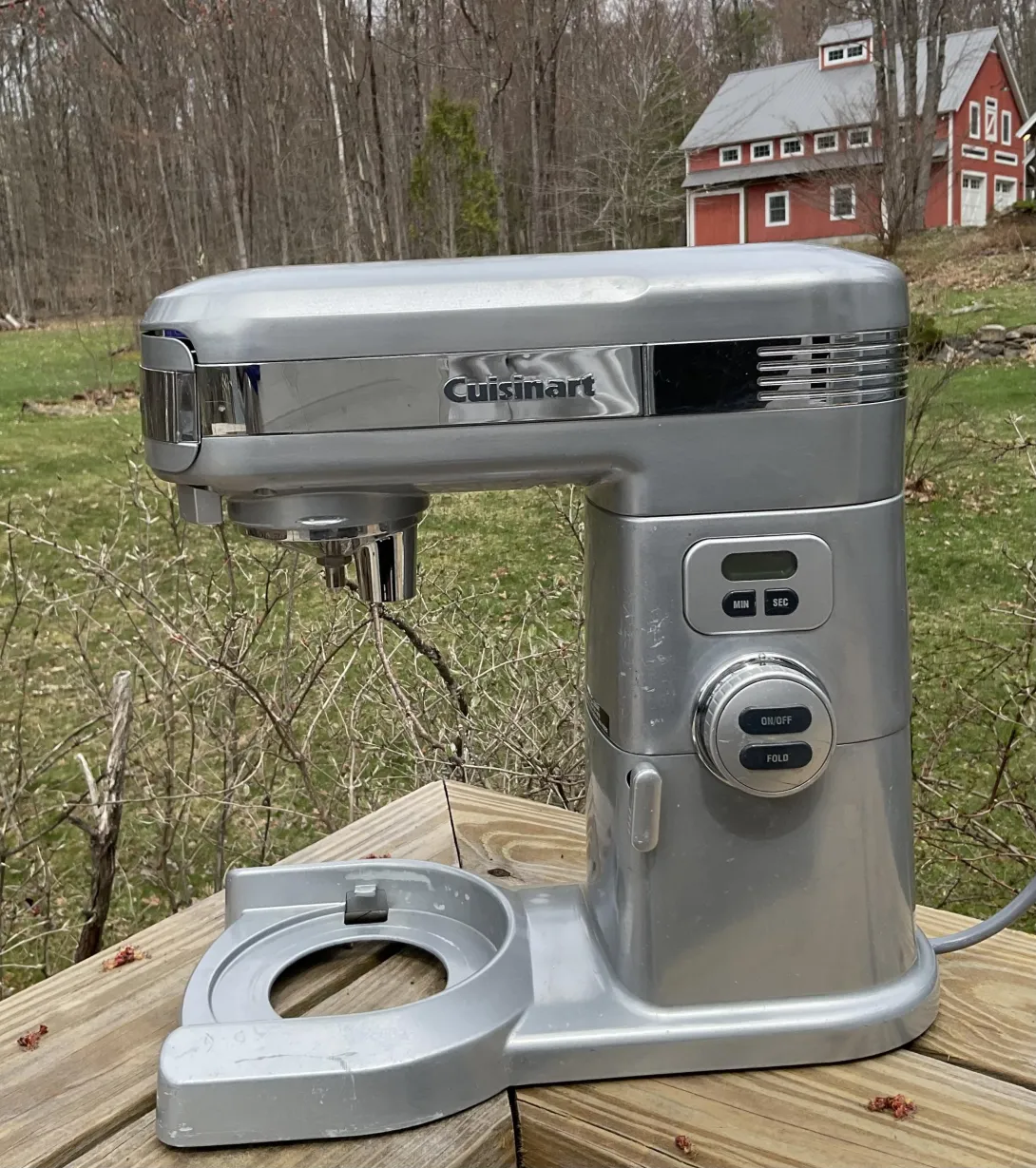
I bought this mixer, model SM-70BC, around 2008 at the King Arthur Baking store in Norwich, VT. It cost around $500 as I recall, which was quite an investment. But it seemed like a real upgrade from my KitchenAid, and was loaded with features. It had three power takeoffs on the top and front, which would drive a variety of of attachments. There was a large and deep mixing bowl, a big wire whip, dough hook and reinforced paddle. There was a timer, so you could set the number of minutes or seconds you wanted it to run, turn it on and leave it; it would shut off after the desired time.
However it had a tendency to walk itself off the counter if you did that, which did eventually happen. It also had a design weakness in the locking device for the hinge. There is a crescent-shaped piece of sheet metal with a slot in it and two round holes at the ends of the slot. As you open the mixer, this slot rides up a shaft to its limit and then snaps the squared end to a different angle in the circular hole, “locking” it. Nice in theory, but poor in practice because of the natural bumping and vibration of a big mixer working on bread dough. The shaft bumps around in the slot, making it wider. It bangs the locking holes on the end, making them stop working as locks. If the machine falls off the counter, it can be the coup de grace, resulting in a machine that will no longer lock in the down position.
This happened to me after owning it for a few years, and while I take most of the blame, I know that it has happened to others. A quick call to Cuisinart informed me that it was discontinued and out of support. The mixer went to the basement to await inspiration and repair at some future date. That was at least 10 years ago.
From time to time, I have scanned listings of mixers, looking for something similar, or any parts that looked likely. I finally found Waring WSM7Q, which while also discontinued, still has parts available. It looked like a ringer. Turns out that the parent company Conair purchased Cuisinart and then Waring….
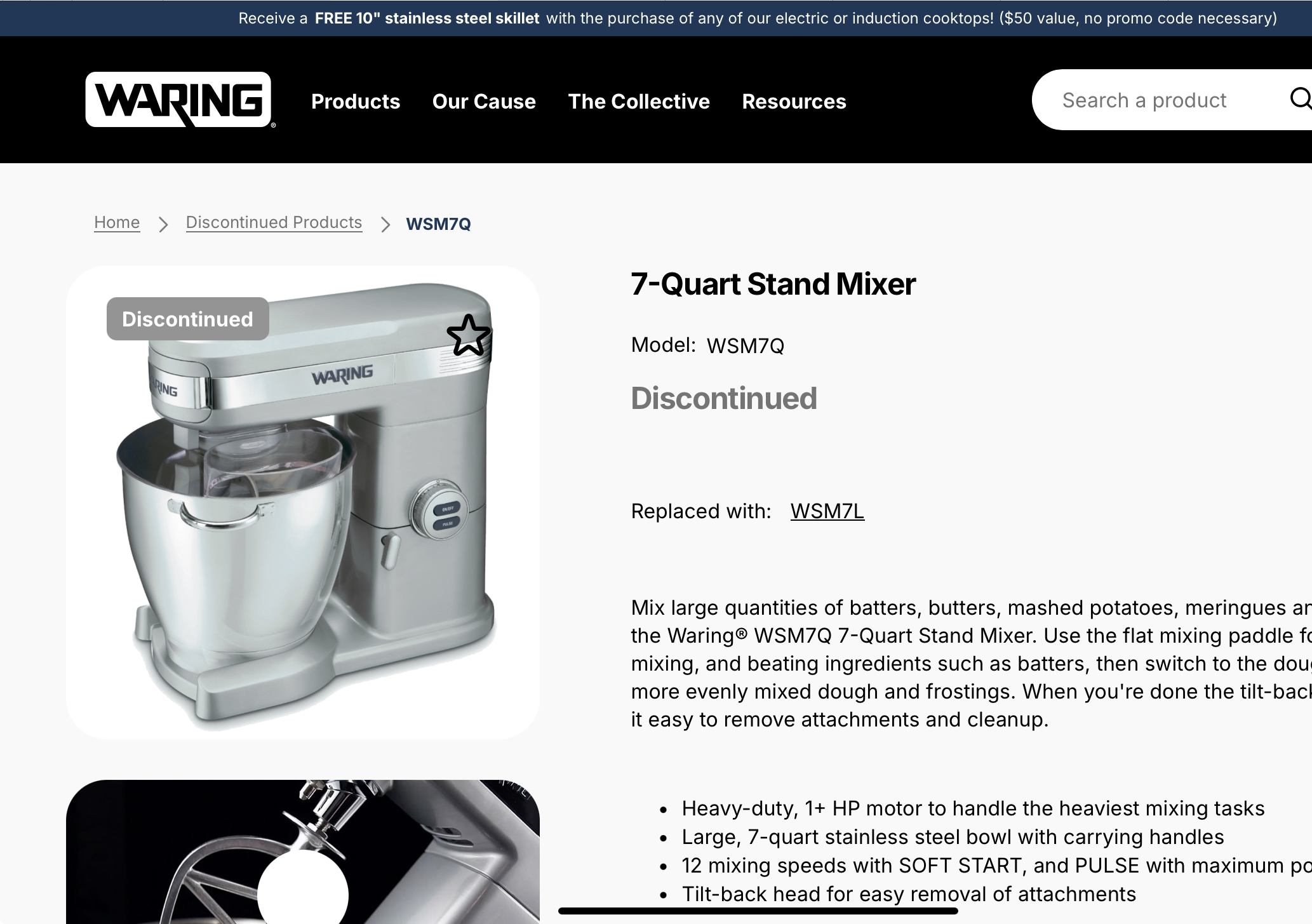
And the hinge latch piece, which they refer to as a Quadrant, was available. I found a video online showing how to remove the latch shaft, and it only required needle nosed pliers.
In case anyone needs this information, here’s what I did:
On the underside of the base, pull out the “e ring” holding the shaft in.
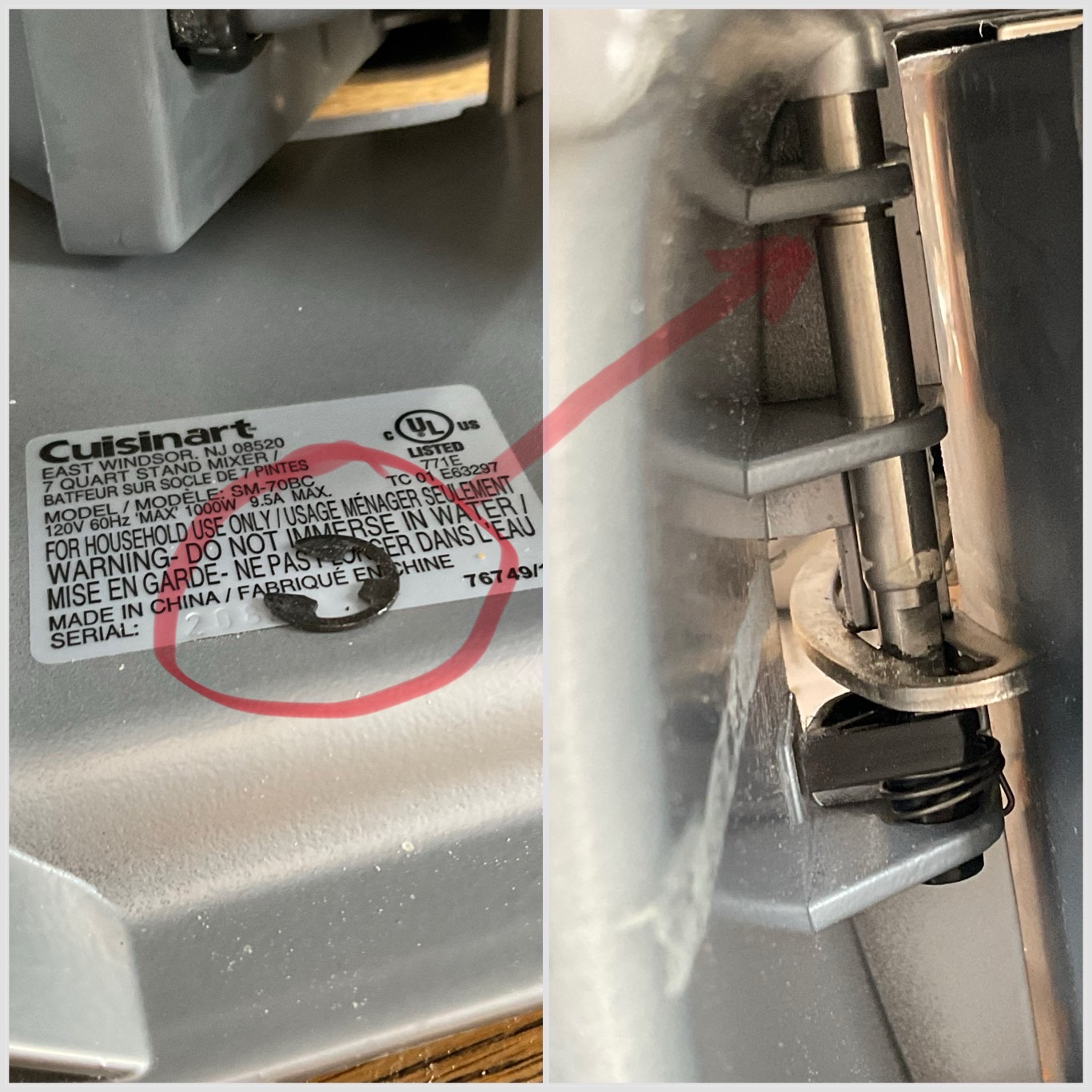
Pull out the shaft for the latch and turn and remove the quadrant from the bracket above it.
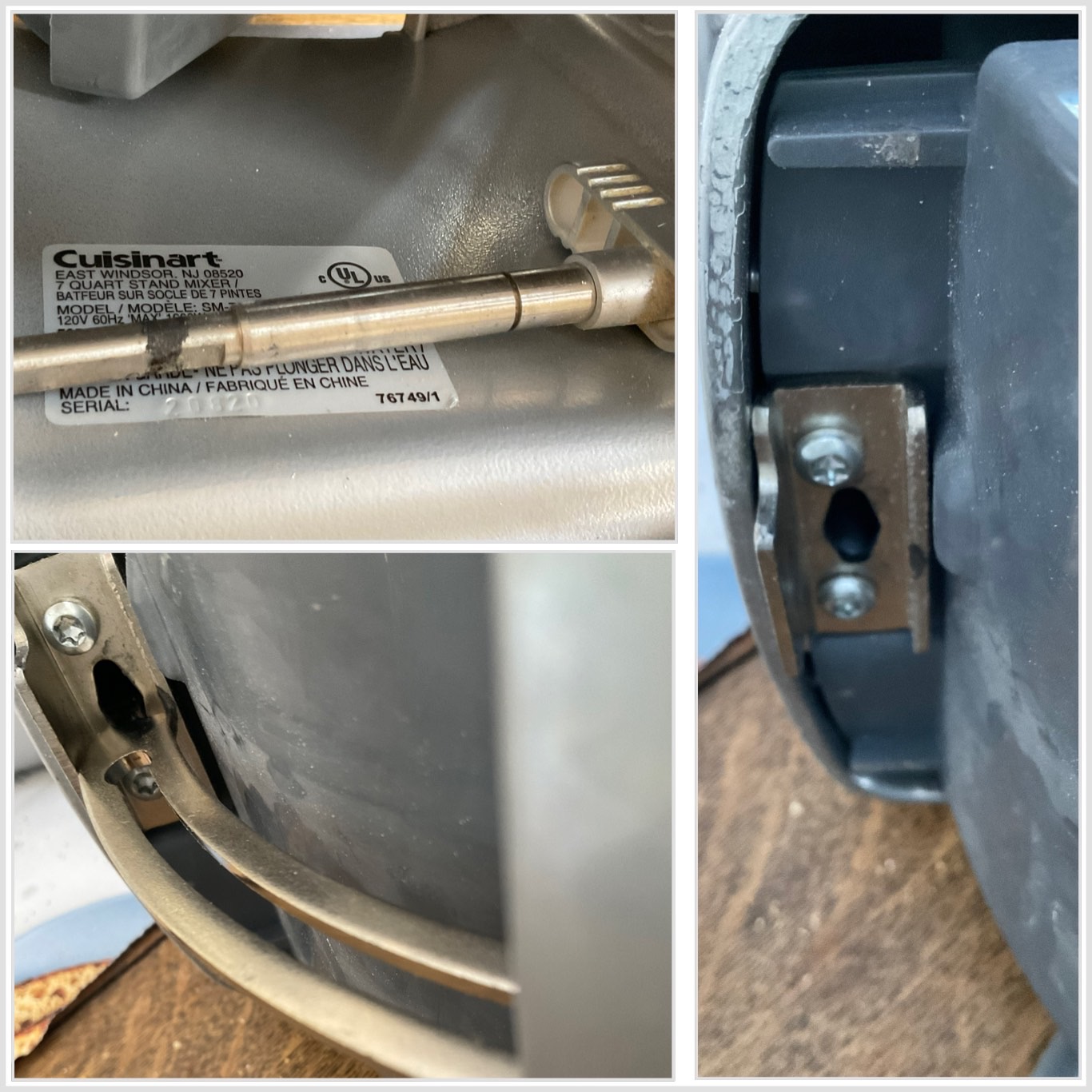
Comparing the old quadrant to the new one, you can see how bent and stretched out it

The slot is much wider, the ends are also damaged. I wanted to squeeze this one to be like the new one, so that I would have an emergency spare. So, I used needle nosed vice grips to first measure the width of the new one, and then squeeze the old one to match. I then compared them by laying the new one over the old, and they are now close to being the same.
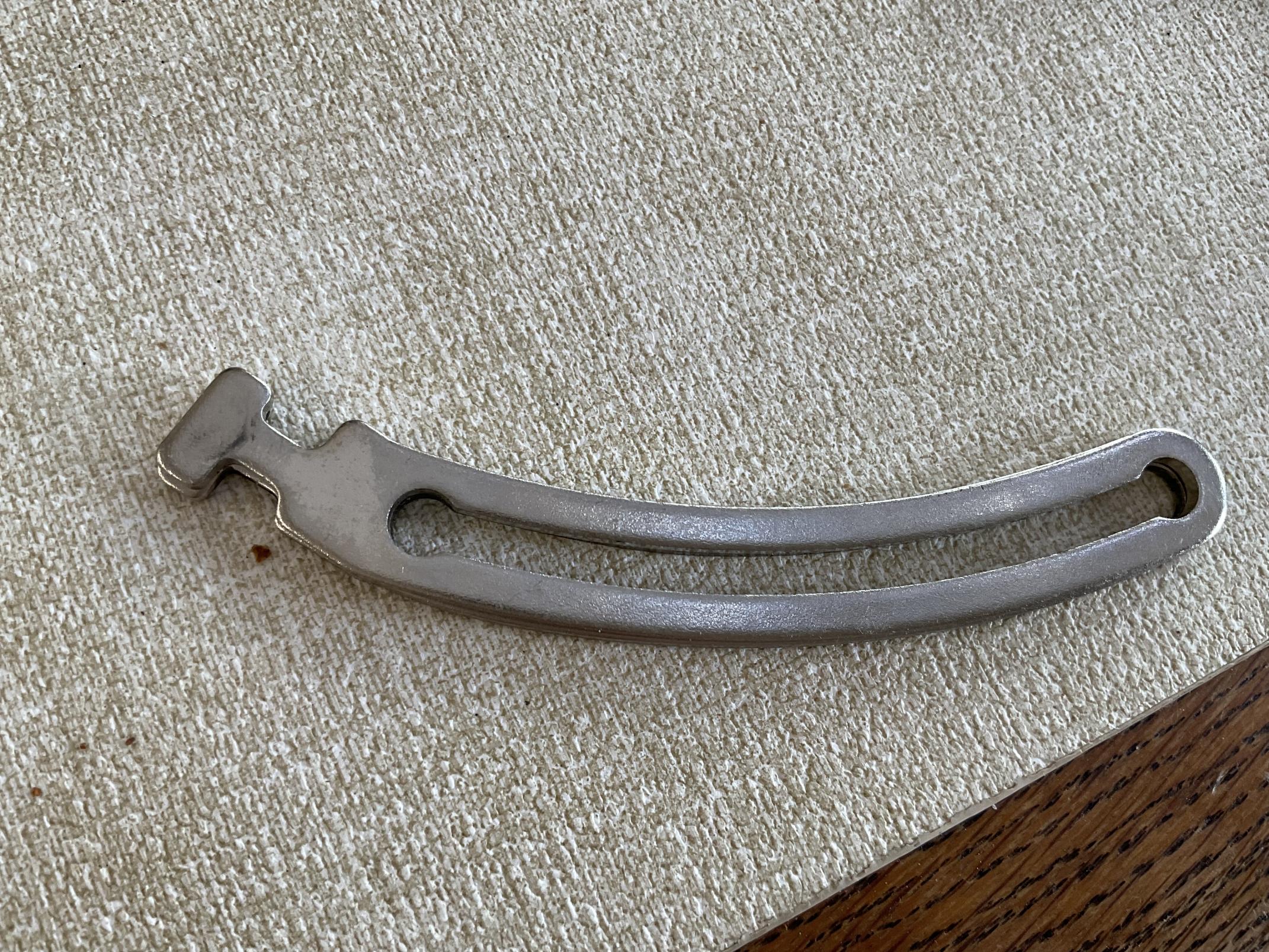
I installed the new one in the machine; the only difficult thing is replacing the e ring (spring clip). I used vice grips to hold it and push it into place, then a screwdriver to push it all the way onto the shaft.

Then came a lengthy cleanup. First, spray Dawn on a sponge, then Windex and paper towels, and finally auto compound to remove the metallic scrapes and improve the finish.
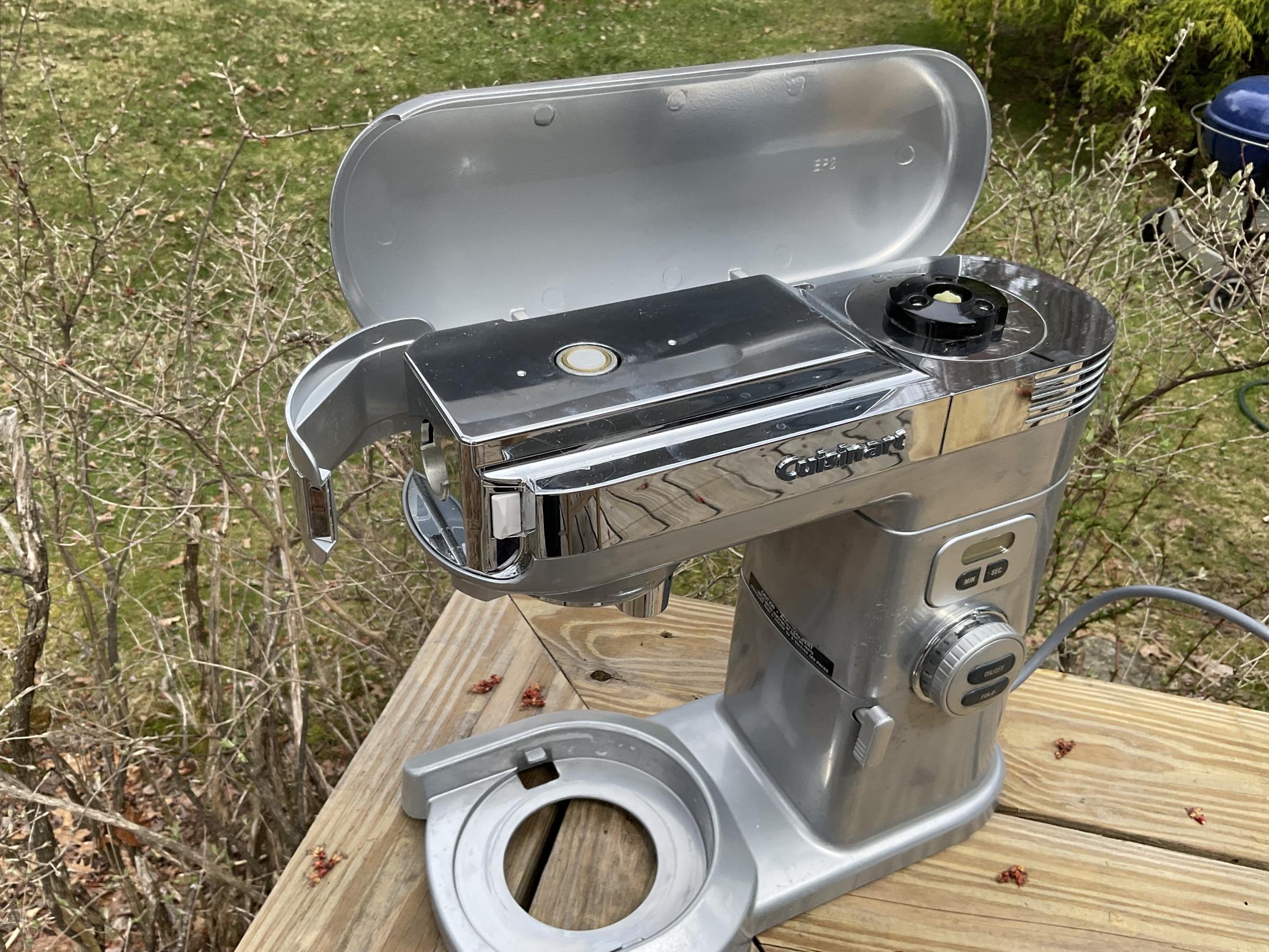
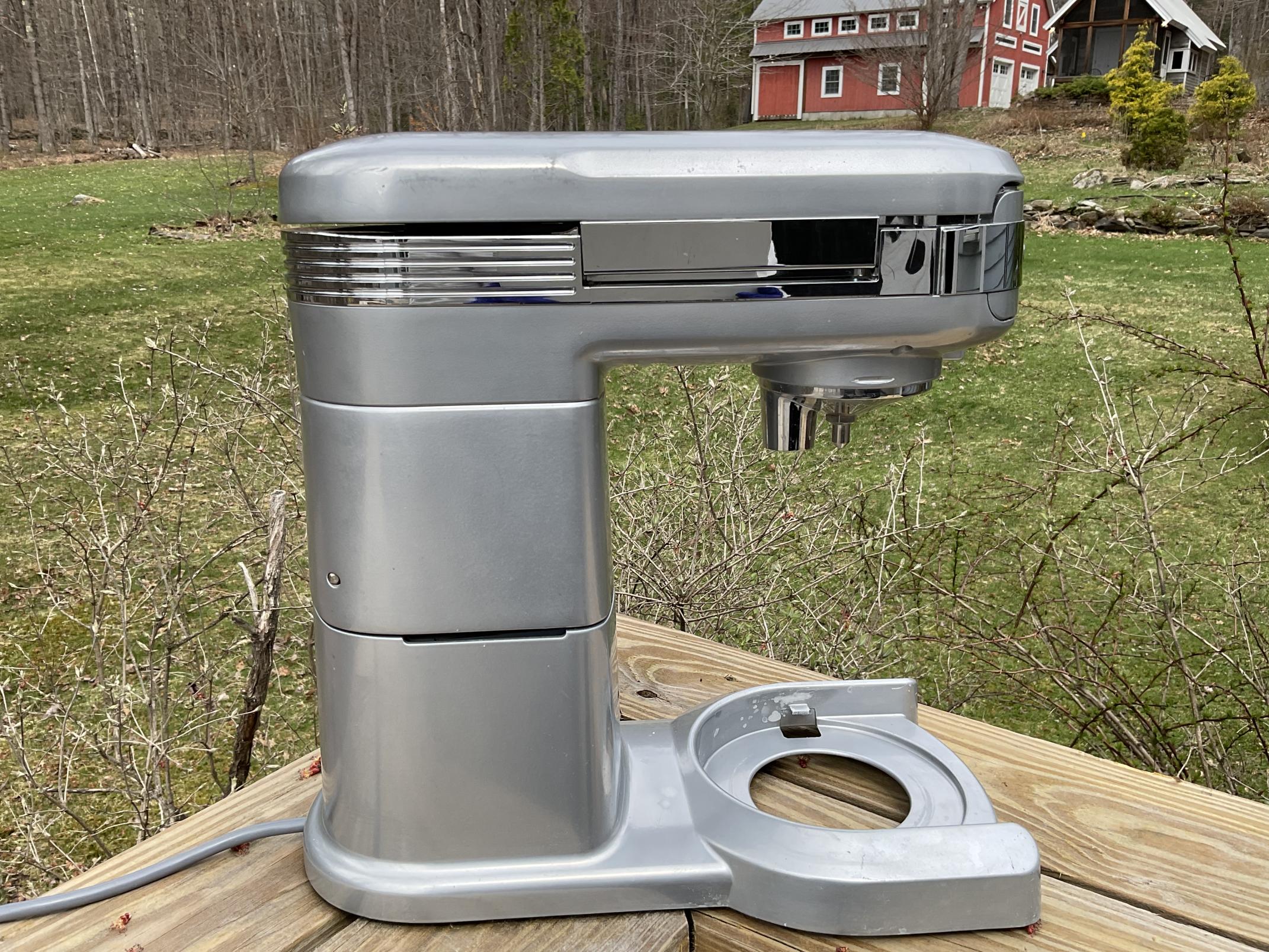
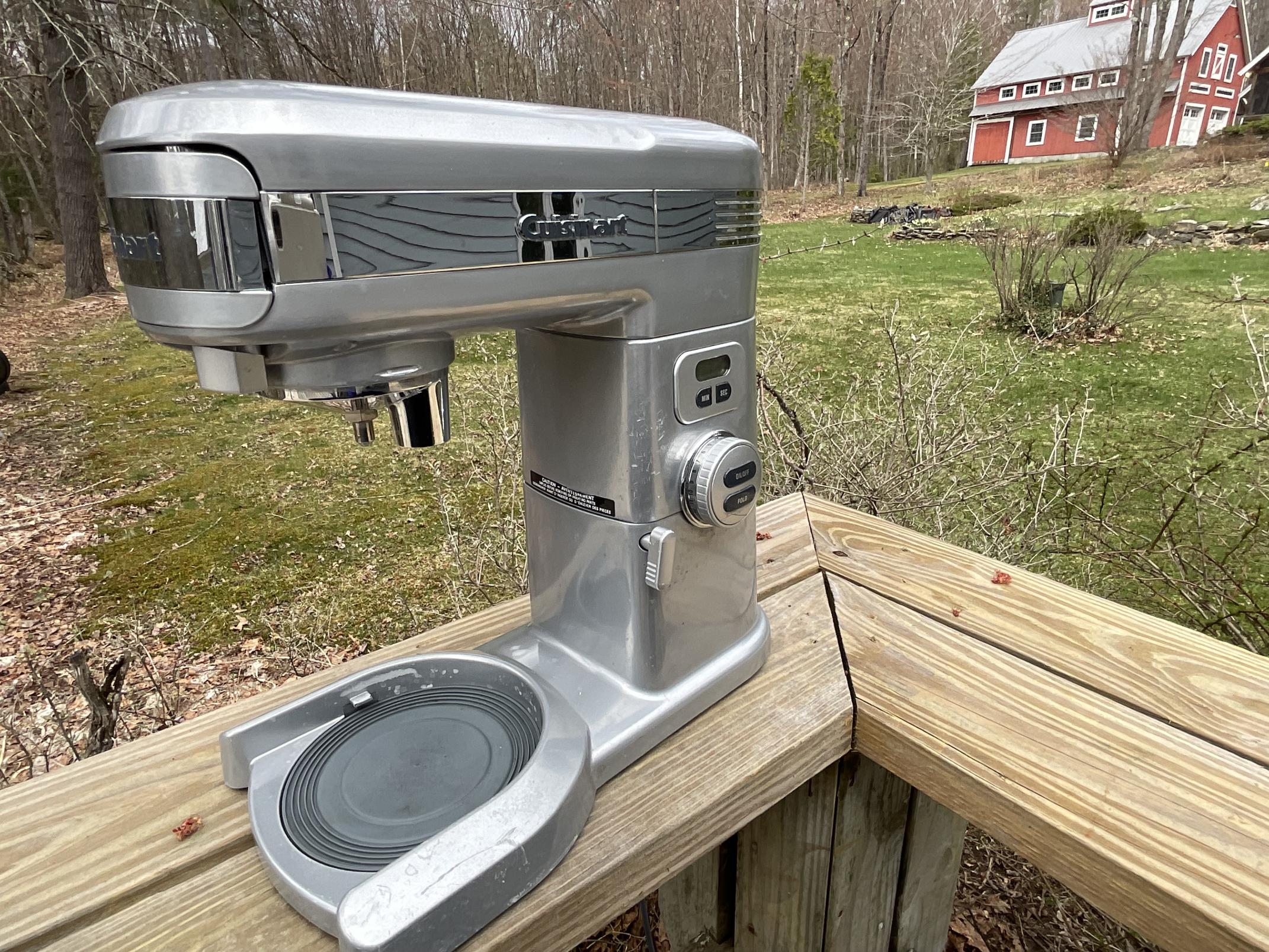
Heigh-ho Silver, away!
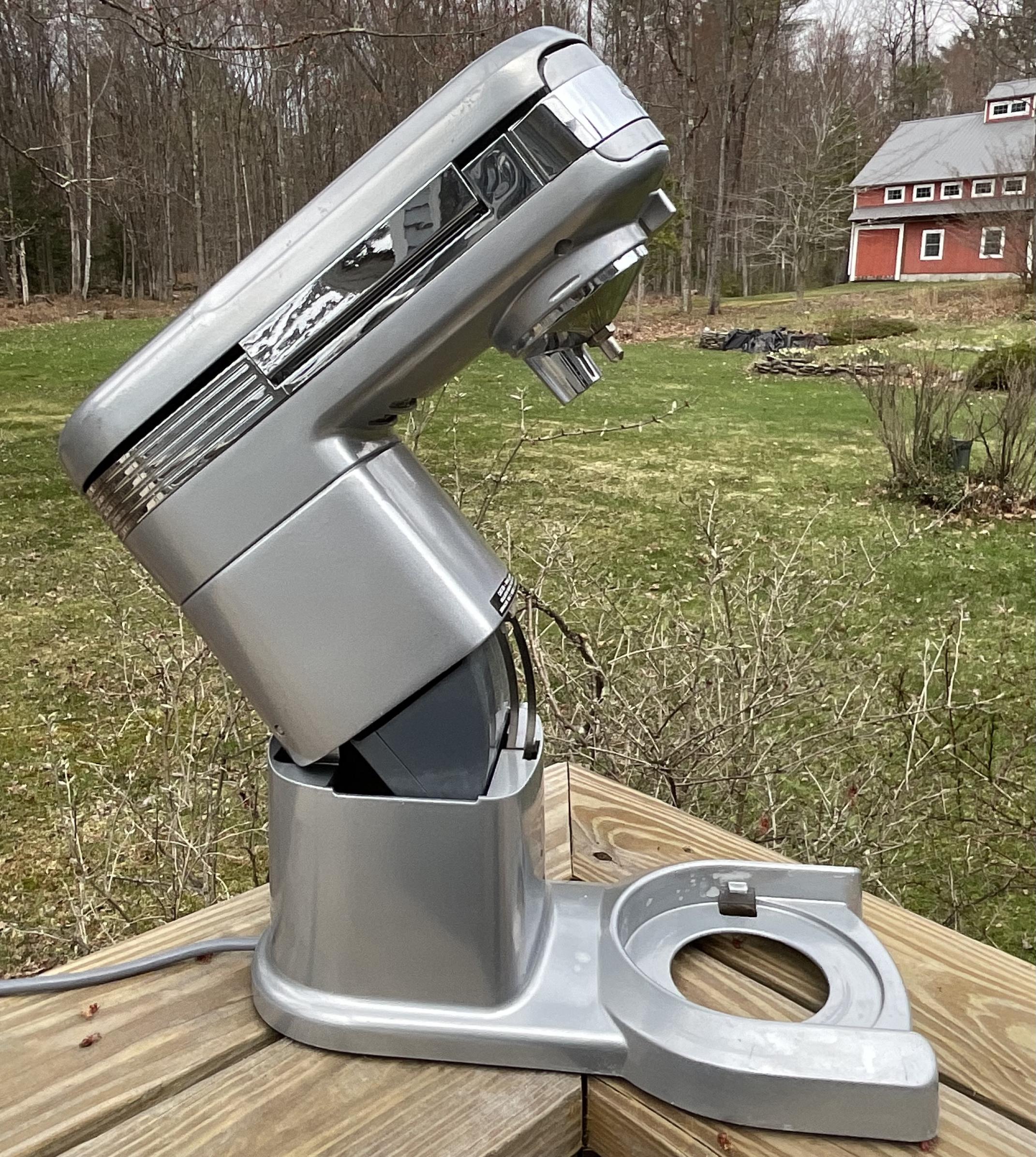
Looks like new!
Thanks for sharing the pictures of a job very well done.
Dave
That is awesome, Sue! I wish I have the tenacity to fix my tools! :D
Jay